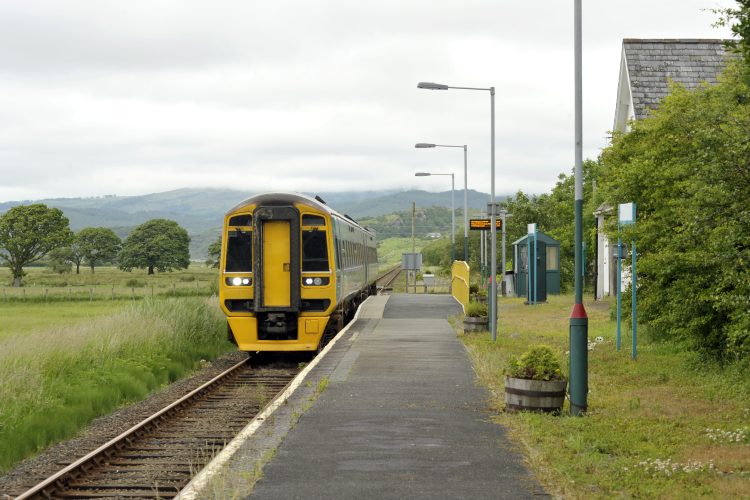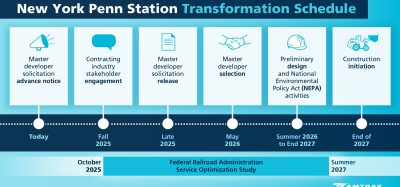Platforms for thriving communities: unlocking the value of stations
Posted: 5 September 2025 | Andy Egis | No comments yet
Andy Parker, Intercity Director at Egis in the UK discusses the potential for railway stations to be reimagined as long-term assets capable of delivering both economic and social value.


It’s easy to think of stations simply as places to get on and off trains. But deeper analysis reveals the potential of train stations to deliver significant economic and social value at the heart of thriving communities.
That might be obvious when you look at St. Pancras International or Birmingham New Street, but what if the same principles were applied to smaller, local stations?
To begin unlocking their full potential, stations should be seen as multi-modal transport hubs.
Across the country, there are thousands of stations waiting to be transformed into community hubs and drivers of local economic growth. From Margate to Middlesbrough – stations can be reimagined as long-term assets that incorporate and maximise various revenue sources to fund infrastructure upgrades.
Join our free webinar: Rail cyber-security in a time of technological and regulatory transformation
Join our expert panel, including speakers from Nokia and Siemens Mobility, to explore the critical convergence of cybersecurity and 5G rail comms.
Date: 3 Dec | Time: 15:00 GMT
Can’t attend live? No worries – register to receive the recording post-event.
To achieve this, a bold shift is required not just in funding levels, but in how subsequent investment is structured and delivered. Both public and private investment have crucial roles to play, and a coherent strategy is needed to ensure that stations across the country can drive local economic development and connectivity.
A network under pressure
An increasing number of stations across the UK are being constrained by outdated design, particularly small and medium-sized stations, which comprise 80% of Network Rail’s estate. For context, the organisation owns the freehold to the majority of more than 2,500 stations in the UK.
Many are therefore struggling to meet the demands of today’s passengers, with issues of overcrowding and accessibility among the growing concerns.
On top of this, the backlog of maintenance work for station buildings and infrastructure has grown to approximately £2 billion. With a projected passenger growth of at least 37% by 2050, building a network of stations built for the future has never been more important.
A joined-up approach
To begin unlocking their full potential, stations should be seen as multi-modal transport hubs. This means integrating rail with buses, trams, cycling infrastructure, walking routes and even emerging modes, such as e-scooters.
In Greater Manchester, for instance, the Bee Network is doing just that, helping commuters make seamless journeys by bus, tram, train, walking, wheeling or cycling. This is just one example of a project that demonstrates how stations can become gateways to wider transport networks, improving accessibility and reducing car dependency.
Stations also hold the potential to be used as vibrant, multi-functional hubs capable of delivering both economic and social value within communities. But how?
Transit points to daily destinations
From an economic standpoint, there are several revenue streams that can be harnessed to make station upgrades more affordable. Direct examples include advertising, car parking and, of course, retail. The latter is an established and reliable source of revenue, and there is no reason why small stations can’t also benefit by tailoring to the local market, customer traffic or even both. Take Melton station in Suffolk, for example, which has housed a local butcher for the past two decades.
On the other hand, a perfect example of an indirect revenue stream is housing and over-station development. Residential properties within a three-mile radius of new stations see value increases, as do commercial property values within a closer proximity. Over station development can be challenging for both logistical and legal reasons.
Yet, successful examples demonstrate that this can still be a useful source of revenue. For instance, an over-station development at Farringdon comprising 138,000 square feet of office space raised £500 million for Transport for London. Network Rail’s Solum Twickenham Gateway project has also seen 121 high-quality residential homes and a new public space with shops and amenities built at Twickenham Station. The latter exemplifies innovative urban development, integrating housing and transport infrastructure to create a community hub.
Perhaps most importantly, stations can accommodate various community amenities to become catalysts for local growth. Victorian station buildings with surplus space could attract visitors by housing pubs or restaurants. Rural stations could offer parcel collection services, which are convenient for local communities as they are typically centrally located and easily accessible by car or foot.
Installing cycle hire points can also be a source of revenue and enhance accessibility, encouraging sustainable transport in the process. By adopting such initiatives, stations become more than transit points – they become places people visit and use regularly.
The case for investment – and why it could pay for itself
By unlocking land value, increasing footfall and generating new income streams, integrated station developments have the potential to fund themselves.
To attract private capital into stations, which aligns with the government’s 10-year infrastructure strategy, investment models require clarity, certainty and appropriateness. Most investors prefer stable and measurable revenue streams, such as retail income, over more variable sources like farebox revenue. The scale of investment is just as important, as station portfolios should be large enough to diversify risk but not to the point where they become unmanageable.
Crucially, many of these improvements can be cost-neutral or even positive over time. By unlocking land value, increasing footfall and generating new income streams, integrated station developments have the potential to fund themselves. The Northern Line Extension to Battersea is a prime example. This scheme incorporated developer contributions and retained business rates to finance the project, aligning public benefit with private return.
For projects to be viable, they must also align with national strategies on transport, housing and infrastructure, clearly demonstrating their value to both the public sector and local authorities. For the latter to support proposals, they must integrate local transport plans and demonstrate social value.
Above all, effective collaboration between public and private sectors is essential. Yet, each stakeholder brings different priorities – local authorities may focus on regeneration while investors seek returns. Public-private partnerships (PPPs) can align these interests, as demonstrated once again by the Northern Line Extension.
A blueprint for resilience
The challenges facing the nation’s station estate are evident, but so too are the opportunities. With the right approach, stations can evolve from ageing assets that clearly predate the surrounding development into spaces that serve both passengers and the wider community.
By aligning public and private investment and fostering long-term partnerships, a new approach can create the conditions for train stations to be designed not just for operational efficiency, but with social and economic value taking centre stage.
With passenger numbers rising and public expectations shifting, embracing a new model of delivery can ensure that stations are both resilient to the challenges ahead and central to the UK’s social and economic renewal strategy.
Discover more about Egis in the UK’s services for rail sector.
OUT NOW: The Definitive Guide to Rail’s Digital Future
The rail industry is undergoing a digital revolution, and you need to be ready. We have released our latest market report, “Track Insight: Digitalisation.”
This is not just another report; it’s your comprehensive guide to understanding and leveraging the profound technological shifts reshaping our industry. We move beyond the buzzwords to show you the tangible realities of AI, IoT, and advanced data analytics in rail.
Discover how to:
- Optimise operations and maintenance with real-time insights.
- Enhance passenger services through seamless, high-speed connectivity.
- Leverage technologies like LEO satellites to improve safety and efficiency.
Featuring expert analysis from leaders at Nomad Digital, Lucchini RS, Bentley Systems and more, this is a must-read for any rail professional.
Related topics
Infrastructure Developments, Multimodality, Passenger Experience/Satisfaction, Station Developments, Sustainability/Decarbonisation







